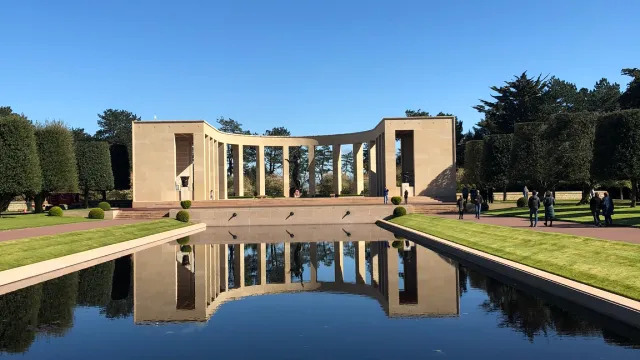Normandy, a land steeped in history, was the scene of crucial events during the Second World War, in particular the D-Day landings on 6 June 1944. For history buffs and the curious, here’s a guide to the historic sites of the Second World War in Normandy.
D-Day Beaches:
Start your exploration at the famous D-Day beaches, where the Allied forces landed on 6 June 1944. The beaches are Utah Beach, Omaha Beach, Gold Beach, Juno Beach and Sword Beach. Walk on the sands where history was made and visit the many memorials that dot these beaches.
Caen Memorial Museum:
Before venturing to the D-Day landing sites, visit the Caen Memorial Museum to gain an in-depth understanding of the historical context. This museum offers a detailed explanation of the causes and consequences of the Second World War, highlighting the events leading up to D-Day.
Normandy American Cemetery at Omaha Beach:
The Normandy American Cemetery, located near Omaha Beach, is a place of remembrance and commemoration. Nearly 10,000 graves of American soldiers who fell in the Battle of Normandy are carefully maintained. Emotion and respect reigns in this solemn place.
Pegasus Bridge:
Pegasus Bridge, stormed by British airborne troops on the night of 5-6 June 1944, is an iconic site. You can see the real bridge preserved in the museum, right next to its installed replica, where the bridge originally stood.
Sainte-Mère-Église Airborne Museum:
For those who already have a good knowledge and wish to delve deeper, there are many small, very detailed museums all along the coast. Visit the Airborne Museum in Sainte-Mère-Église to learn more about the paratroopers and gliders who played a crucial role in the early hours of D-Day.
Pointe du Hoc:
Pointe du Hoc, overlooking the D-Day landing beaches, offers a spectacular view of the sea. This site was the scene of a heroic operation by the American Rangers, who climbed the cliffs to neutralise the German artillery batteries. The craters and remains of the bunkers bear witness to the intensity of the fighting.
Practical advice:
- Opt for a guided tour for an enriching experience and in-depth information.
- Respect the solemnity of memorial sites and cemeteries.
- Prepare your visit by consulting the opening times of museums and monuments.
In conclusion, Normandy offers visitors a moving insight into the history of the Second World War. By exploring these sites, you will honour the memory of the brave men and women who took part in these decisive events that changed the course of history.


